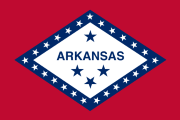
|
RC
|
||
|
Reading Fundamentals: Reading Fundamentals includes skills that can be applied to literary and informational texts.
|
||
|
Central idea
Supporting details
Theme
Literary texts
Informational passages
Nonfiction books
|
||
|
Central idea
Supporting details
Theme
Literary texts
Informational passages
Nonfiction books
|
||
|
Inference
Theme
Text evidence
Text evidence in literary passages
Text evidence in nonfiction passages
|
||
|
Inference
Theme
Text evidence
Text evidence in literary passages
Text evidence in nonfiction passages
|
||
|
Short stories
Literary passages
Informational passages
Nonfiction books
Compare texts
|
||
|
Short stories
Literary passages
Informational passages
Nonfiction books
Compare texts
|
||
|
Reading Literature: Reading Literary includes skills that are specific to literature.
|
||
|
Poetry
Theme
Short stories
Literary passages
|
||
|
Poetry
Theme
Short stories
Literary passages
|
||
|
|
||
|
|
||
|
Reading Information: Reading Information includes skills that are specific to non-fiction texts.
|
||
|
Text relationships
Arguments
Supporting details
|
||
|
Text relationships
Arguments
Supporting details
|
||
|
Text structure
Development of ideas
Development of ideas in nonfiction passages
|
||
|
Text structure
Development of ideas
Development of ideas in nonfiction passages
|
||
|
W
|
||
|
Style: Writing style includes different types of writing for different purposes.
|
||
|
Organization
Author's purpose
Supporting evidence
Logical fallacies
|
||
|
Organization
Author's purpose
Supporting evidence
Logical fallacies
|
||
|
Text structure
Organization
Topic sentences
Development and support
Logical fallacies
Plagiarism
|
||
|
Text structure
Organization
Topic sentences
Development and support
Logical fallacies
Plagiarism
|
||
|
Organization
Point of view
Descriptive details
Formatting
|
||
|
Organization
Point of view
Descriptive details
Formatting
|
||
|
Production: Writing production includes volume and clarity of writing and the writing process.
|
||
|
Word choice and usage
Supporting details
|
||
|
Word choice and usage
Supporting details
|
||
|
Introductions and conclusions
Thesis statements
Organization
|
||
|
Introductions and conclusions
Thesis statements
Organization
|
||
|
Complete sentences
Sentence types
Sentence variety
|
||
|
Complete sentences
Sentence types
Sentence variety
|
||
|
Author's purpose
Text structure
Organization
Development and support
|
||
|
Author's purpose
Text structure
Organization
Development and support
|
||
|
|
||
|
|
||
|
Organization
Revision
Editing
Complete sentences
Sentence variety
Pronouns
Modal verbs
Subject-verb agreement
Verb tense
Adjectives and adverbs
Comparatives and superlatives
Commas
Dashes
Capitalization
Formatting
Plagiarism
|
||
|
Organization
Revision
Editing
Complete sentences
Sentence variety
Pronouns
Modal verbs
Subject-verb agreement
Verb tense
Adjectives and adverbs
Comparatives and superlatives
Commas
Dashes
Capitalization
Formatting
Plagiarism
|
||
|
|
||
|
|
||
|
Formal style
Adjectives and adverbs
Comparatives and superlatives
Plural nouns
Plural and possessive nouns
Pronouns and antecedents
Subject and object pronouns
Possessive pronouns
Reflexive pronouns
Relative pronouns
Modal verbs
Subject-verb agreement
Past, present, and future tense
Progressive tense
Perfect tense
Conjunctions
Contractions
Restrictive and nonrestrictive elements
Commas
Dashes and hyphens
Capitalization
Formatting
Complete sentences
Plagiarism
|
||
|
Formal style
Adjectives and adverbs
Comparatives and superlatives
Plural nouns
Plural and possessive nouns
Pronouns and antecedents
Subject and object pronouns
Possessive pronouns
Reflexive pronouns
Relative pronouns
Modal verbs
Subject-verb agreement
Past, present, and future tense
Progressive tense
Perfect tense
Conjunctions
Contractions
Restrictive and nonrestrictive elements
Commas
Dashes and hyphens
Capitalization
Formatting
Complete sentences
Plagiarism
|
||
|
Research: Research includes identifying a topic, gathering information, and assessing sources.
|
||
|
V
|
||
|
Vocabulary: Vocabulary includes understanding and using words to communicate effectively.
|
||
|
|
||
|
|
||
|
Prefixes
Suffixes
Greek and Latin roots
Context clues
Reference materials
Synonyms
Antonyms
Multiple-meaning words
Word choice and usage
Analogies
|
||
|
Prefixes
Suffixes
Greek and Latin roots
Context clues
Reference materials
Synonyms
Antonyms
Multiple-meaning words
Word choice and usage
Analogies
|
||
|
Connotation and denotation
Word choice and usage
|
||
|
Connotation and denotation
Word choice and usage
|
||
|
Tone
Figures of speech
|
||
|
Tone
Figures of speech
|
||
|
L
|
||
|
Structure: Language structure involves correct use of parts of speech and creating sentences in speaking and writing, including how the arrangement of words within sentences impacts the meaning.
|
||
|
Plural nouns
Plural and possessive nouns
Direct and indirect objects
|
||
|
Plural nouns
Plural and possessive nouns
Direct and indirect objects
|
||
|
Reflexive pronouns
Relative pronouns
|
||
|
Reflexive pronouns
Relative pronouns
|
||
|
Past, present, and future tense
Progressive tense
Perfect tense
Subject-verb agreement
Linking verbs
|
||
|
Past, present, and future tense
Progressive tense
Perfect tense
Subject-verb agreement
Linking verbs
|
||
|
Adjectives
Adverbs
|
||
|
Adjectives
Adverbs
|
||
|
Dependent clauses
Compound and complex sentences
Conjunctions
Conjunctive adverbs
|
||
|
Dependent clauses
Compound and complex sentences
Conjunctions
Conjunctive adverbs
|
||
|
Conventions: Conventions involve the correct use of mechanics in writing.
|
||
|
Frequently confused words
Homophones
Regular plurals
Possessive nouns
Irregular past tense
Comparatives and superlatives
Contractions
|
||
|
Frequently confused words
Homophones
Regular plurals
Possessive nouns
Irregular past tense
Comparatives and superlatives
Contractions
|
||